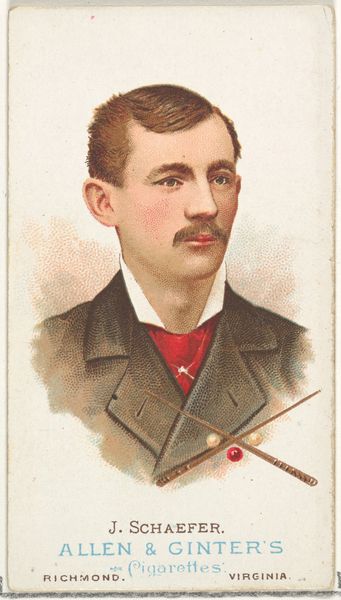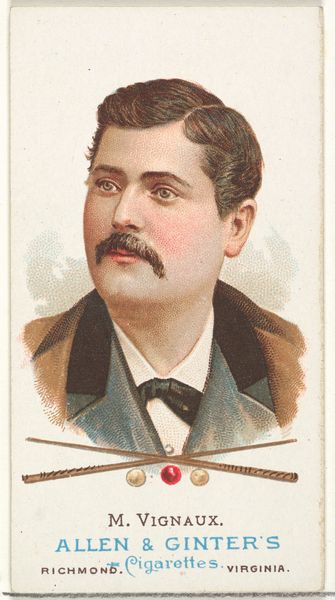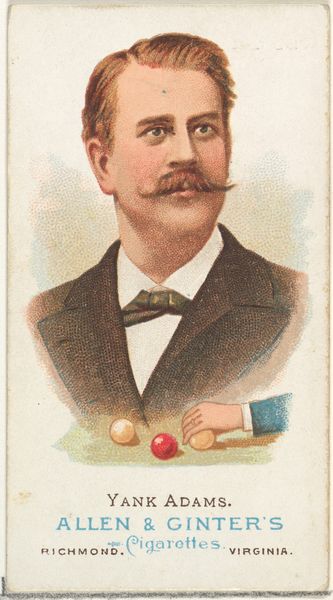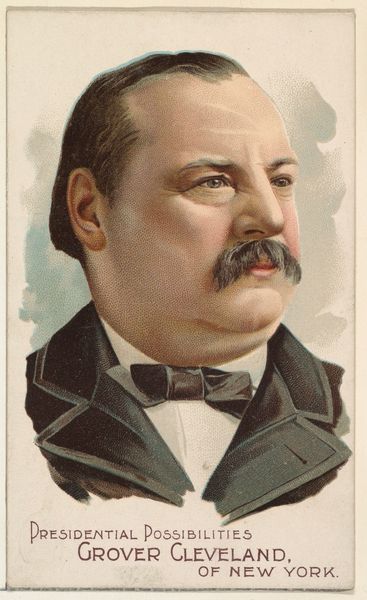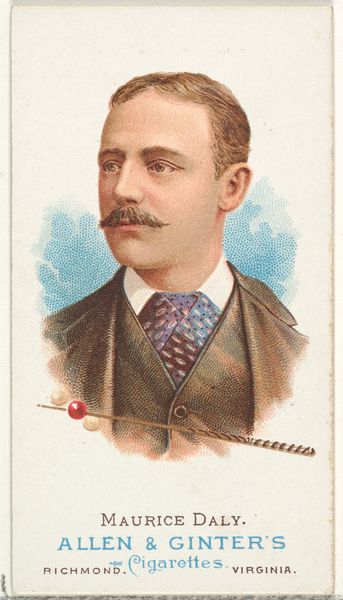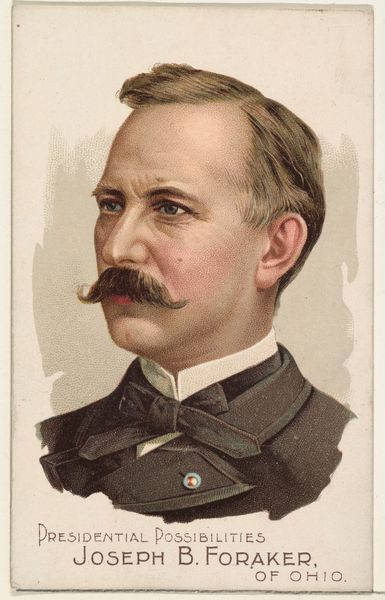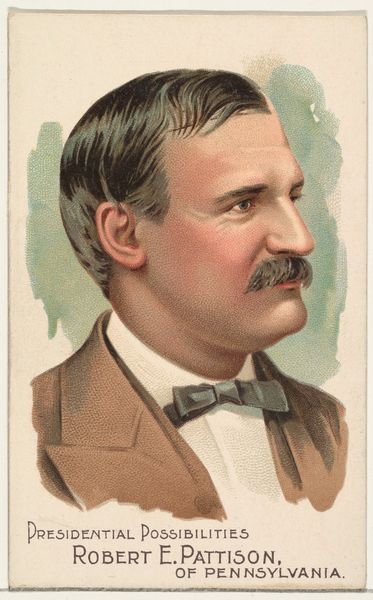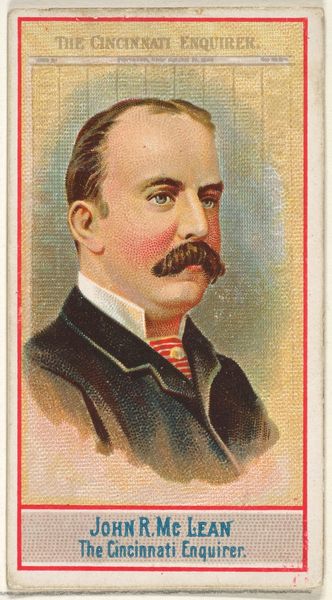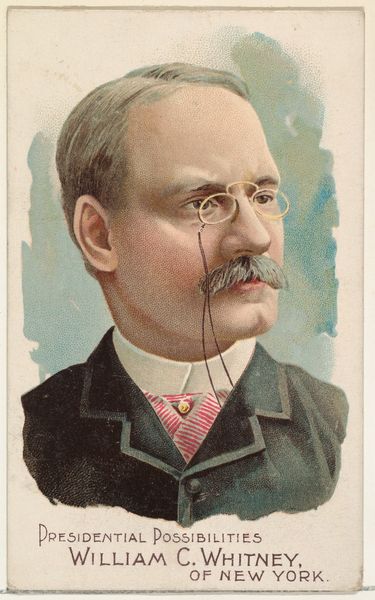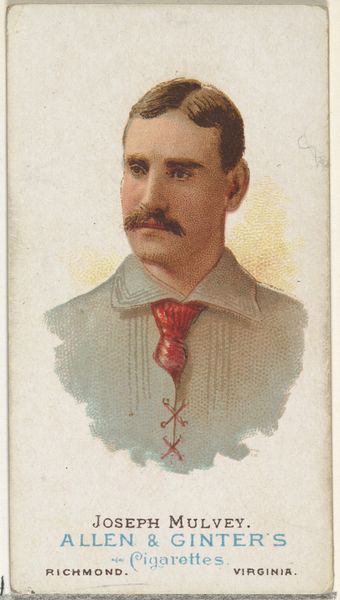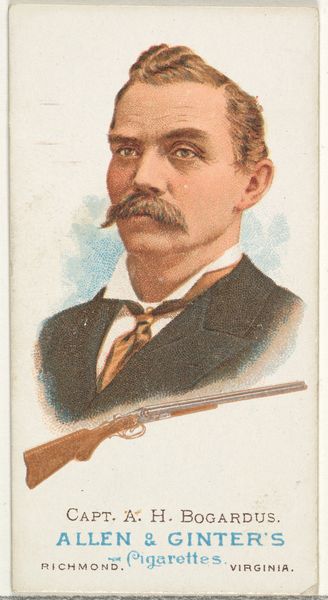
Joseph Dion, Billiard Player, from World's Champions, Series 1 (N28) for Allen & Ginter Cigarettes 1887
0:00
0:00
drawing, print
#
portrait
#
drawing
#
aged paper
#
yellowing background
#
photo restoration
# print
#
caricature
#
portrait reference
#
yellow element
#
19th century
#
men
#
portrait drawing
#
word imagery
#
fine art portrait
Dimensions: Sheet: 2 3/4 x 1 1/2 in. (7 x 3.8 cm)
Copyright: Public Domain
Editor: This is "Joseph Dion, Billiard Player," a print from 1887 by Allen & Ginter Cigarettes. It seems so formal, yet it was included in a cigarette pack. How can we consider this work? Curator: It's crucial to consider the context. These weren't just "prints." They were trade cards, a form of advertising deeply embedded in the rise of consumer culture. What materials were used in their production, and how does that impact our understanding? Editor: I see it’s printed, so likely mass-produced… Does that diminish its artistic value in any way? Curator: Not necessarily. It redirects it. The value lies in understanding its role in shaping social habits and consumer desire. Cigarette companies used images of famous people like Joseph Dion to elevate their product, associating smoking with success and sophistication. Consider the labor involved: the artists creating the image, the factory workers producing the cards, and ultimately, the consumers purchasing the cigarettes. Editor: So, instead of focusing on the artist's singular vision, we're looking at the entire production chain. Is it meant to democratize art? Curator: Democratization is a complex term. It certainly made images more accessible, but primarily as a tool to drive consumption. Were they elevating their consumers or manipulating them? Consider also who was excluded from this form of portraiture; whose labor made it all possible, yet remains unseen? Editor: This card prompts a fascinating shift in perspective from admiring a portrait to examining its manufacturing and social effect. Curator: Precisely. It challenges us to think critically about how art and commerce intersect and what power dynamics are at play. These weren't just collectible artworks; they were instruments of a burgeoning consumer economy.
Comments
No comments
Be the first to comment and join the conversation on the ultimate creative platform.
